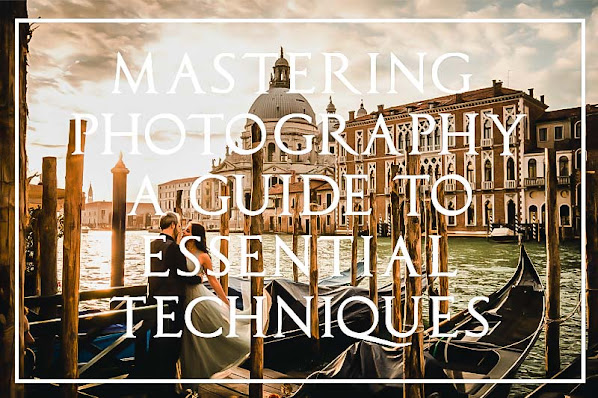Street Photography Mastery: A Guide to Capturing Candid Moments and Navigating Legal & Ethical Considerations
Street photography is a compelling art form that captures the raw essence of everyday life. It blends technical skills with storytelling to create powerful imagery. Whether you’re an aspiring photographer or a seasoned professional, mastering street photography requires an understanding of composition, camera settings, legal frameworks, and ethical considerations. This guide will explore the key techniques for capturing candid moments while staying respectful and within legal boundaries.
1. Essential Camera Settings for Street Photography
Street photography is dynamic and often unpredictable, requiring quick reflexes and optimal camera settings. Here are the best settings to ensure sharp, well-exposed shots:
Aperture Priority Mode (A or Av): Allows control over depth of field while the camera automatically adjusts the shutter speed.
Shutter Speed: Keep it at 1/250s or faster to freeze movement. In bright conditions, 1/500s to 1/1000s is ideal.
ISO: A lower ISO (100-400) reduces noise, but in low-light scenarios, an ISO range of 800-3200 ensures proper exposure.
Autofocus Mode: Continuous Autofocus (AI Servo/AF-C) tracks moving subjects.
Shooting Mode: Burst mode helps capture fleeting expressions.
White Balance: Auto WB works well, but custom settings can add mood to your shots.
2. Composition Techniques for Capturing Candid Moments
Composition plays a crucial role in the impact of street photography. These techniques help enhance visual storytelling:
Rule of Thirds: Placing subjects at intersection points creates balanced compositions.
Leading Lines: Streets, alleys, and architecture can guide the viewer’s eye.
Framing: Use doorways, windows, or objects to frame subjects.
Juxtaposition: Contrast between old and new, rich and poor, or movement and stillness can create compelling images.
Negative Space: Leaving space around a subject enhances its presence.
Layering: Including foreground, midground, and background elements adds depth.
Light and Shadow: Utilize strong contrasts and silhouettes for dramatic effect.
3. Approaching and Photographing Strangers
Capturing human expressions naturally requires confidence and discretion. Here are some effective techniques:
Blend In: Dress inconspicuously and move with the crowd.
Use a Silent Shutter: Mirrorless cameras with silent mode prevent unwanted attention.
Shoot from the Hip: Shooting without raising the camera maintains candidness.
Engage First: If appropriate, talk to your subject before photographing.
Look Beyond Faces: Hands, gestures, and interactions can tell powerful stories.
4. Legal Considerations in Street Photography
Laws regarding street photography vary by country and region. Below are key legal aspects to consider:
Public vs. Private Spaces: In most countries, photography in public spaces is legal, but shooting on private property requires permission.
Rights to Privacy: Some jurisdictions protect individuals from having their likeness used commercially without consent.
Commercial Use: Selling photos featuring recognizable people often requires a model release.
Restricted Areas: Government buildings, military sites, and some public transport zones may have photography restrictions.
Law Enforcement: If approached by law enforcement, remain calm, know your rights, and comply where necessary.
5. Ethical Guidelines for Responsible Street Photography
Even when legally allowed, ethical considerations should always be a priority.
Respect Personal Boundaries: Avoid intruding on private moments or distressing individuals.
Avoid Exploitation: Be mindful when photographing vulnerable communities or individuals.
Cultural Sensitivity: Research local customs before photographing in foreign countries.
Permission When Needed: While candid shots are the essence of street photography, obtaining consent when possible fosters trust.
Do No Harm: Consider whether an image could negatively impact the subject before sharing it publicly.
6. Post-Processing for Street Photography
Editing enhances the impact of a street photograph while preserving its authenticity. Follow these steps for effective post-processing:
Convert to Black & White: Removes distractions and enhances emotion.
Adjust Contrast & Exposure: Ensure a balanced histogram and increase contrast for dramatic effect.
Sharpening: Apply moderate sharpening to enhance details.
Crop Thoughtfully: Maintain strong composition without excessive cropping.
Dodge & Burn: Lightly adjust shadows and highlights to guide the viewer’s eye.
7. Best Equipment for Street Photography
While any camera can be used for street photography, some gear choices offer advantages:
Cameras: Mirrorless cameras (Fujifilm X100V, Ricoh GR III, Leica Q2) are lightweight and discreet.
Lenses: Prime lenses (35mm or 50mm) offer fast apertures and sharp quality.
Accessories: A wrist strap, extra batteries, and an ND filter help in various lighting conditions.
8. Mastering the Mindset of a Street Photographer
Beyond technical skills, developing the right mindset is key to successful street photography.
Stay Observant: Train your eye to notice subtle interactions and fleeting moments.
Be Patient: Great shots require waiting for the right moment.
Build Confidence: Overcome the fear of shooting in public by starting in familiar environments.
Embrace Imperfection: Some of the best street photographs are raw and spontaneous.
Conclusion
Mastering street photography is a continuous journey of observation, quick decision-making, and storytelling. By refining your camera settings, composition techniques, and ethical awareness, you can create compelling images that resonate with viewers. Remember, the best street photographers are those who respect their subjects while capturing the soul of the streets.
About Us
At CB Photographer Venice, we specialize in capturing authentic moments in one of the world’s most visually stunning cities. Whether you're looking for artistic street photography or a professional to document your special occasion, our team offers expert photography services tailored to your needs. With over a decade of experience, we bring a unique perspective to every shot, ensuring timeless and evocative images. Hire a Venice Photographer today and preserve your memories with stunning visuals.




Comments
Post a Comment